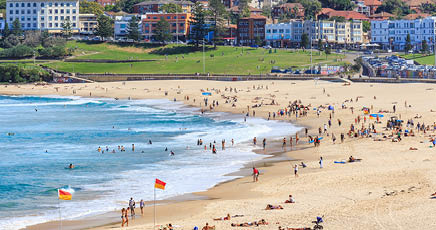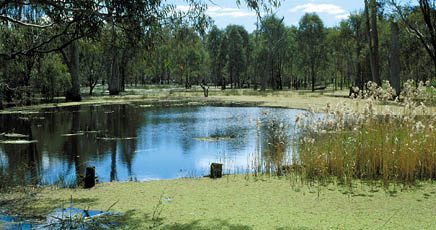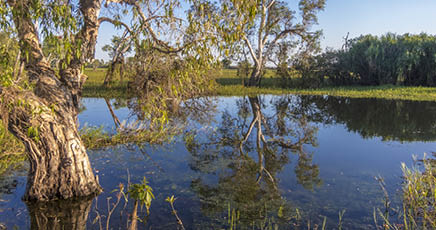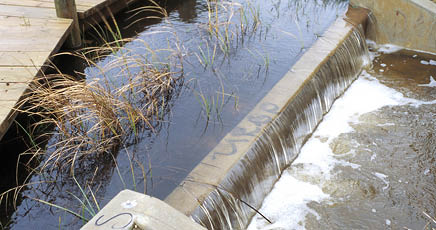LEARNING ACTIVITY
STORY
Amir could not believe it when Mick told their volunteer group that in Australia, over 200 species of marine animals are impacted by marine debris, either by ingestion or entanglement. He told them that our actions affect our environment.
Amir and his friends decided that they would approach their school principal to discuss ways they could raise awareness of this topic within their school community. While most people would know not to throw things down our drain, reminders are always helpful and perhaps they can encourage more families to volunteer their time with the local Coastcare group on Sunday mornings.

Eighty-five percent of Australians live within 50km of the coast. This activity looks at the waste that washes downstream in our catchments, the impacts it has on our estuaries, wetlands and coastal areas where the rivers meets the sea.
This learning activity is the final part of a sequence of 5 individual learning activities focused on catchment management. The order of these learning activities are: the story of a river, water sustainability, what’s in a drop?, the drain is just for rain and where the river meets the sea.
For students to:
- understand the different journey water takes through a catchment
- learn how waste can enter the waterways
- discover the impacts of waste on estuaries, wetlands and the coastal habitats
- appreciate that what happens on land can impact our rivers and oceans.
This activity can be undertaken at any time of year.
Introduction
This activity investigates the journey of waste into our waterways and eventually the sea. Students explore how waste can impact our wetland and marine environments.
*Time allocation includes 20 minutes of adult preparation.
Checklist
- Outside drain (100g soil/dirt or clay , 100g leaves, twigs or sticks, plastic )
- Kitchen Sink (100ml of vegetable oil, 100g Organic food scraps)
- Kitchen Sink (20ml detergent)
- Toilet (4 squares of toilet paper)
- Toilet (2 x tissues)
- Toilet (2 x wet wipes)
Instructions
STEP 1:
The journey so far
As a class, discuss the impact of the local land uses you identified in the water sustainability activity – specifically around waste.
Does urban, industrial and stormwater waste generated in your local area have any downstream impacts?
STEP 2:
Experiment: sink, float or dissolve
Let’s test a few common materials that end up in our stormwater and wastewater systems:
Fill 6 x 1L clear containers with 500ml of water. Follow the instructions in the activity sheet and add the materials to the containers.
Stir each container with the plastic ruler; observe and record the changes in the activity observation sheet.
STEP 3:
Were you surprised by the results of the experiment?
Does this change your attitude to waste in our waterways and their downstream impacts?
STEP 4:
What now?
Use all the knowledge gained from the Catchment Management activities to discuss what you can do to reduce your water consumption and reduce the amount of waste entering out wastewater and stormwater systems.
Extension Activity
Monitor the toilet paper, tissue and wet wipes to see how long it takes them to break down in water. Check on your experiment each day over the next 4 weeks to see and record if they have broken down.
Now that you understand more about your local catchment, how can you share your discoveries to motivate others? Devise an onsite project to gather support and increase awareness with your peers and the community.
Curriculum and Framework Links
SCIENCE
Year 7: ACSSU111, ACSSU112, ACSSU116, ACSHE120, ACSHE121, ACSIS124, ACSIS125, ACSIS130, ACSIS131, ACSIS132
Year 8: ACSHE135, ACSIS140, ACSIS145, ACSIS146, ACSIS234
Year 9: ACSSU175, ACSSU176, ACSIS164, ACSIS165, ACSIS170, ACSIS172, ACSIS174
Year 10: ACSSU189, ACSHE191, ACSHE194, ACSIS199, ACSIS204, ACSIS206, ACSIS208
BIOLOGY
Unit 1: Biodiversity and the interconnectedness of life
EARTH AND ENVIRONMENTAL SCIENCE
Unit 1: Introduction to Earth systems
Unit 3: Living on Earth – extracting, using and managing Earth resources
Unit 4: The changing Earth – the cause and impact of Earth hazards
HUMANITIES AND SOCIAL SCIENCES
Year 7: ACHASSI152, ACHASSI155, ACHASSI154, ACHASSI155, ACHASSI156, ACHASSI158, ACHASSI159, ACHASSI160, ACHASSI161, ACHASSI162, ACHASSK183, ACHASSK185, ACHASSK187
GEOGRAPHY
Year 7: ACHGK037, ACHGK038, ACHGK040, ACHGK042, ACHGS047, ACHGS048, ACHGS049, ACHGS050, ACHGS051, ACHGS052, ACHGS054
Year 8: ACHGK048, ACHGK050, ACHGK051, ACHGK053, ACHGS055, ACHGS056, ACHGS060, ACHGS062
Year 9: ACHGK065, ACHGS068, ACHGS070
Year 10: ACHGK070, ACHGK073, ACHGK074, ACHGK075, ACHGS079
Unit 1: Natural and ecological hazards
Unit 2: Sustainable places
Unit 3: Land cover transformations
HEALTH AND PHYSICAL EDUCATION
Year 7 & 8: ACPPS073
ETHICAL UNDERSTANDING
Exploring values, rights and responsibilities
PERSONAL AND SOCIAL CAPABILITY
Social awareness
CURRICULUM CONNECTIONS
Outdoor Learning
CROSS CURRICULUM PRIORITY
Sustainability
Reference List
ONLINE RESOURCES
Sydney Water has a range of resources to find out more about wastewater and recycling and stormwater as well as more ways to conserve water, and how does water play a role in creating liveable cities.
PRINTABLE RESOURCES
Discover What’s in Wastewater with this resource from Sydney Water.
WATCH
Watch the short video from Sydney Water on why you should keep wipes out of pipes (2.5 minutes).
PHOTOS
Wetlands in the Cortina Lakes area, SW of Keith, SA. Photographer: Willem van Aken
Barmah forest wetland, VIC. Photographer: Willem van Aken
Stormwater runoff at the Paddocks wetland in the northern Adelaide suburb of Salisbury, SA. Photographer: Willem van Aken
We value your feedback
When you have finished this learning activity, please tell us what you think with our survey.
Your feedback will help Landcare Australia improve the activities in the Junior Landcare Learning Centre.
Why not try one of our other Junior Landcare learning activities?
Love Letters to the Land
Biodiversity|First Nations Perspectives|Food Production|Waste Management
Creating a worm farm
Waste Management
Caring for our coasts: beach clean-up
Waste Management
Waterways: clean-up
Waste Management



